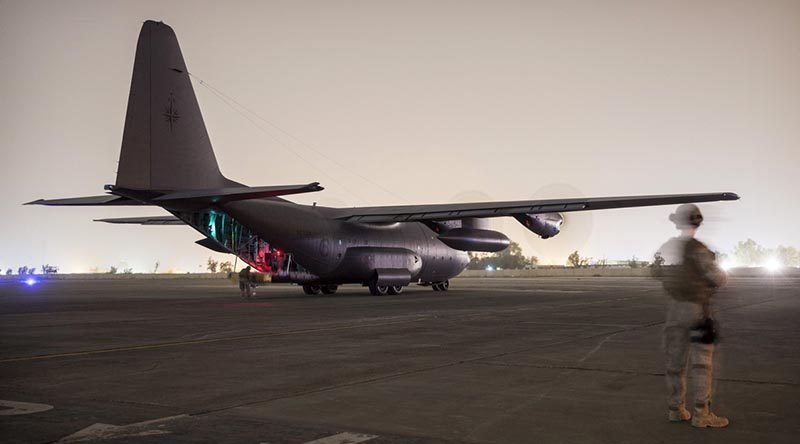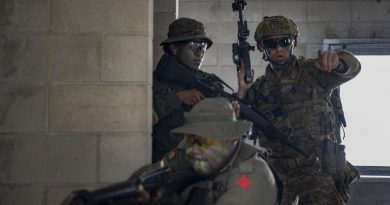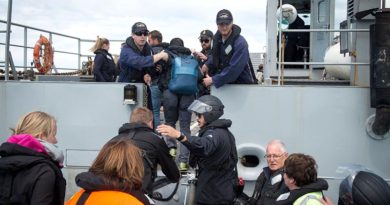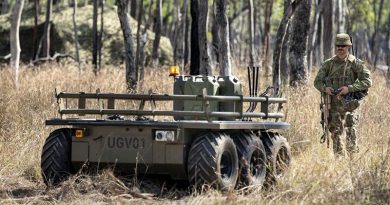RNZAF working double time in Middle East

The New Zealand Defence Force air transport team sent to support coalition operations in the Middle East has completed the equivalent of three months’ worth of flying in just six weeks.
CAPTION: A New Zealand soldier provides force protection as a Royal New Zealand Air Force C-130 Hercules aircraft carrying New Zealand and Australian soldiers prepares to take off from the Taji military complex in Iraq. ADF photo
Squadron Leader (SQNLDR) Rhys Evans, the detachment commander, said a C-130 Hercules aircraft and a detachment of 34 personnel from the Royal New Zealand Air Force (RNZAF) had clocked about 120 flying hours on 15 missions in Iraq and Afghanistan since they went to the Middle East in early June.
The air transport team has been operating as part of an Australian Defence Force (ADF) air mobility task group transporting freight and coalition personnel in the region.
“We are currently flying about 23 hours a week and have carried out all the sorties assigned to us by the ADF Joint Task Force. The RNZAF C-130 is definitely holding its own alongside other aircraft operated by the task force and is a great asset,” SQNLDR Evans said.
“It has been a team effort getting the aircraft in the air. The air crew and support staff are doing the hard yards to ensure we successfully carry out our mission.”
Major General (MAJGEN) Tim Gall, the Commander Joint Forces New Zealand, said the high tempo was an example of the valuable support the NZDF contributed to coalition operations seeking to maintain peace and stability in the region.
“The 120 flying hours is equivalent to about three months’ worth of flying when the aircraft is conducting standard tasks here in New Zealand. Completing this many hours in six weeks without missing a single mission is a great achievement. It’s wonderful to see the team perform so well on these operational missions,” MAJGEN Gall said.
Night-vision goggle flights had also been carried out as part of the mission, he said.
“Some of the airfields we operate in do not have any lighting or navigation aids and so we must position the aircraft for landing and take-off with visual reference to the terrain. To do this we must use night-vision goggles.”
Searing temperatures that often exceed 43 degrees posed the biggest challenge to members of the NZDF detachment, particularly the maintenance personnel, who had to work outdoors, SQNLDR Evans said.
“There are times when we are wearing body armour and helmets, so it’s like working in full safety clothing in the chicken warmer at a fast-food outlet. The blast of heat that you feel when you open an oven is what it’s like every time you step outside.
“When the aircraft is on the ground the temperature inside can exceed 60 degrees. At these temperatures the aircraft skin becomes so hot that you will burn your hand if you touch it.”
The RNZAF personnel are deployed for six months, until December..
.
.
.
.
.
.
.

.
.






